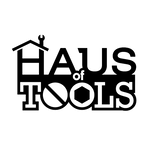How to Care for and Use Insulated Tools Properly

Because an insulated tool is designed to protect against an electrical shock up to 1,000 volts, it’s really important to make sure that you inspect the tool for damage prior to use. What you want to be on the lookout for is to ensure that tool doesn’t have any cuts, gouges, scrapes or cracks. If they do, that means the insulation has been compromised and it won’t protect you from a shock. If an insulated tool is found in this condition, it should be discarded.

 Even though visual inspections for a breach are important, it’s not enough to just do that. Insulated tools also need to be kept clean. This is important because “Moisture, films or surface contaminants are conductive, so insulated tools should be kept clean and dry at all times.” One would hope that a tool wouldn’t get coated with a conductive substance while working near an electrical circuit, but it could happen. Probably the best thing to do is ensure the insulated tools are wiped down after use and if they become dirty, they should be cleaned immediately after use. It might also be a good idea to give them a good wipe down before use during your inspection for damage in case they’ve been spilled on while in storage. If you need a thorough cleaning, a noncorrosive cleaner like dish soap is the best option, or proprietary cleaners like Kline Kleaner wipes will work as well. It’s a no brainer that you don’t want to do this right before using them as a wet insulated tool shouldn’t be used.
Even though visual inspections for a breach are important, it’s not enough to just do that. Insulated tools also need to be kept clean. This is important because “Moisture, films or surface contaminants are conductive, so insulated tools should be kept clean and dry at all times.” One would hope that a tool wouldn’t get coated with a conductive substance while working near an electrical circuit, but it could happen. Probably the best thing to do is ensure the insulated tools are wiped down after use and if they become dirty, they should be cleaned immediately after use. It might also be a good idea to give them a good wipe down before use during your inspection for damage in case they’ve been spilled on while in storage. If you need a thorough cleaning, a noncorrosive cleaner like dish soap is the best option, or proprietary cleaners like Kline Kleaner wipes will work as well. It’s a no brainer that you don’t want to do this right before using them as a wet insulated tool shouldn’t be used.
Once you have ensured your insulated tools are clean, dry, free of blemishes and ready to use, the recommended use of an insulated tool usually stipulates that you power off the circuit BEFORE you start working on it. Even on a circuit that isn’t live, insulated tools should be used in case the circuit is unintentionally turned on. To prevent that, you might also wish to employ a lockout tag out to add an extra layer of safety.

Insulated tools are probably one of the coolest innovations to happen to tools in the last couple hundred years. They add an extra layer of safety when working on and around potentially dangerous environments where a live circuit is. To ensure that they provide the maximum amount of safety you need to inspect and maintain your tools as well as follow proper safety precautions while using them on the job. If you take care of your tools and use them properly, they’ll help take care of you.




I’ve been an industrial electrician in various manufacturing facilities for more than 20 years. Insulated tools have been around for a while but not taken seriously until of late. I began using them recently because I found some at a friend’s supply business at a reduced (friend) cost. I use screwdrivers and nut drivers exclusively now. I cant buy from him so I do shop around when I need a new screwdriver. Haven’t worked with the pliers or wrenches yet.
Certainly agree with what you say.
Leave a comment